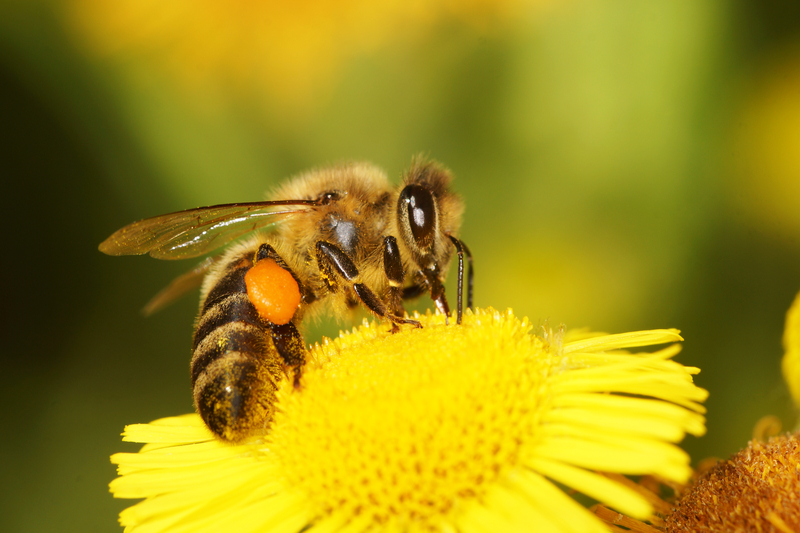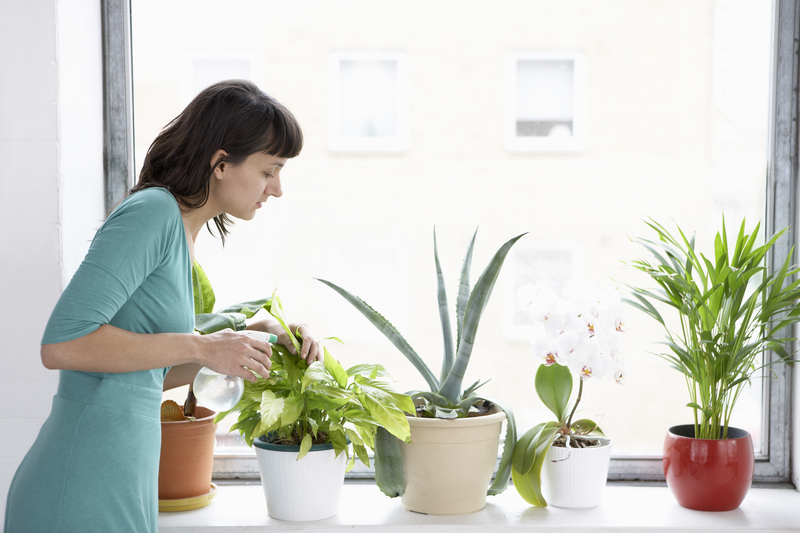Brighten Up Your UK Garden With Bold Tropical Leaf Forms
Are you dreaming of lush, exotic paradise right at your doorstep? Brighten up your UK garden with bold tropical leaf forms and transform it into a vibrant escape from the ordinary. Boldly shaped and vividly coloured tropical leaves can inject an instant wow factor into even the drabbest of outdoor spaces. In this comprehensive guide, you'll discover how to successfully introduce tropical leaf plants into your British garden--no matter your climate or experience level.

Why Choose Tropical Leaf Plants for UK Gardens?
The UK is known for its temperate climate and, let's be honest, sometimes unpredictable weather. But with careful plant selection and some clever gardening practices, anyone can enjoy the drama and beauty of tropical foliage in their own backyard. Here's why you should consider tropical leaf forms for your next garden refresh:
- Stunning Visual Impact: Nothing turns heads quite like gigantic, sculptural leaves with bold colours and dramatic shapes.
- Year-Round Interest: Many tropical and subtropical plants offer lasting greenery, ensuring your garden stays lush for longer--even outside peak blooming season.
- Exotic Atmosphere: A garden filled with broad palms, spiky alocasias, and colourful cascades of canna lilies whisks you away without needing a plane ticket.
- Versatility: There are tropical plants suited for full sun, partial shade, containers, or borders, so you can add bold leaf beauty wherever you wish.
- Wildlife Attraction: Tropical plants often support local biodiversity by offering shelter and food to pollinators and other garden wildlife.
What Are Bold Tropical Leaf Forms?
Tropical leaf forms refer to plants with large, striking, or uniquely textured leaves typical of rainforests, jungles, and subtropical regions. They stand out for their shapes, sizes, and dazzling colours, instantly elevating any landscape.
Common Features of Bold Tropical Foliage
- Size and Shape: Huge, fan-shaped, paddle-like, or spear-shaped leaves that dominate their surroundings.
- Texture: Glossy, ribbed, deeply veined, or velvety foliage adds tactile interest.
- Colour: From emerald green and chartreuse to burgundy, bronze, and variegation patterns, these leaves delight with their palettes.
- Architectural Value: Many exude a structural elegance, providing instant focal points and drama to garden beds.
Let's dive into how you can introduce these fantastic elements into your own UK garden and instantly brighten up your space with tropical leaf forms.
Top Choices for Bold Tropical Leaf Plants in the UK
Not all tropical plants are suitable for the British climate, especially in more northern or exposed regions. Yet many species are surprisingly hardy, and others thrive in pots with a bit of winter protection. Here are the top picks to bring dramatic leaf shapes to your patch of paradise:
Banana Plants (Musa basjoo)
Musa basjoo, also known as Japanese banana, is famed for its massive arching leaves. It's the hardiest banana for the UK and is often used to brighten UK gardens with bold tropical structure. Even if the pseudostems die back in winter, the roots usually survive to send up new growth in spring.
- Exposure: Full sun to partial shade
- Soil: Rich, moist, well-drained
- Winter Protection: Mulch root area heavily in late autumn
Canna Lilies (Canna indica and hybrids)
Known for their vibrantly coloured leaves--often streaked with burgundy, gold, or purple--cannas also produce bright, exotic flowers. Their lush foliage provides a distinctly tropical appearance, especially when mass-planted.
- Sun: Full sun for best colour and growth
- Water: Enjoy consistently moist soils
- Container Friendly: Easy to lift and store tubers over winter
Giant Hostas
For dramatic leaf forms in shady UK gardens, giant hostas like 'Empress Wu' offer jumbo corrugated leaves in beautiful shades of green or blue. While not tropical in origin, their striking size and shape evoke the right aesthetic.
- Shade: Prefers dappled to full shade
- Moisture: Needs regular watering
- Pest Watch: Protect from slugs and snails
Tetrapanax papyrifer 'Rex'
Nicknamed the 'rice paper plant,' Tetrapanax boasts huge palmate leaves up to 1m across. This is the go-to plant for an immediate, jungle-like impression.
- Conditions: Sun or light shade; sheltered location needed
- Control: Can sucker and spread, keep in check
- Winter: May need fleece in severe cold
Fatsia japonica
A favourite for UK tropical gardens, this shrub provides glossy, deeply divided foliage all year round--even in shade. Fatsia is tough, evergreen, and copes well with less-than-ideal conditions.
- Exposure: Shade tolerant; urban and coastal gardens
- Benefits: Excellent for north-facing walls and containers
- Maintenance: Low; remove yellowing leaves for neatness
Colocasia (Elephant Ears)
Colocasia excels at creating drama with its massive, heart-shaped foliage in vibrant greens or purples. Best grown in large pots outdoors in summer, and brought inside as houseplants over winter.
- Water: Loves damp soil--do not let dry out
- Feed: Benefits from regular feeding during the growing season
- Winter: Needs frost-free indoor storage
Tree Ferns (Dicksonia antarctica)
A classic statement plant, the soft, arching fronds of the Dicksonia antarctica provide unique texture and instant tropical style. Tree ferns can thrive in milder coastal areas or with protection.
- Shade: Prefers dappled shade
- Moisture: Requires regular watering
- Winter: Insulate crown with straw in cold snaps
Palms (Trachycarpus fortunei & Chamaerops humilis)
Hardy palms are the backbone of any British exotic garden, with their elegant fan leaves creating instant impact.
- Trachycarpus: Wind and frost-tolerant
- Chamaerops: More compact, suited to containers
- Low Maintenance: Once established, they thrive with little fuss
Alocasia (African Mask Plant)
Alocasia features arrow-shaped leaves with bold veins and stunning shapes. These are best for protected gardens or as summer bedding plants in containers.
- Position: Warm, sheltered, shaded
- Soil: Moist but well-drained
- Winter: Bring indoors when temperatures drop
Design Tips: Creating a Tropical Paradise With Bold Leaf Plants
To make the most of your tropical foliage, consider some expert design techniques to create an immersive jungle look that brightens your outdoor space:
1. Layer Your Foliage
- Combine tall plants like bananas or tree ferns in the background with mid-sized species (cannas, alocasia), and lower-growing spreads of giant hosta or ferns up front.
- This layering maximizes visual impact and mimics how plants grow in real rainforests.
2. Mix Leaf Shapes and Colours
- Contrast large, rounded leaves with slim, spear-shaped varieties for variety.
- Incorporate variegated, purple, or deeply cut leaf plants to keep the scene lively and engaging.
3. Create Bold Groupings
- Plant in generous clusters or drift, rather than spreading specimens thinly around the garden.
- Groups of three or five plants together make a far more outsize impact.
4. Use Containers for Flexibility
- Many tropical leaf forms--colocasia, canna, banana--will thrive in large pots.
- Containers give freedom to rearrange displays as needed, and make overwintering tender species easier.
5. Add Complementary Elements
- Paving, boulders, or timber decks help emphasize the lush feel and provide textural contrast.
- Outdoor lighting aimed upwards will highlight large leaves after dark.
- Water features like ponds or fountains complement the humid, jungle vibe and provide essential moisture.
6. Shelter and Microclimate Creation
- Create microclimates with hedges, fences, or evergreen shrubs to protect bold leaf plants from wind and cold.
- Situate tender exotics against house walls or in courtyard gardens for extra shelter and radiant warmth.
How to Care for Tropical Leaf Plants in the UK
While many tropical plants offer dramatic leaf shapes and colours, they do require a bit of extra care--especially over the colder months. Here are essential maintenance tips:
- Soil Preparation: Add plenty of organic matter to the planting area for moisture retention and fertility.
- Feeding: These fast-growers appreciate regular feeding during the active season with a balanced or nitrogen-rich fertilizer.
- Watering: Keep soil moist but not waterlogged; containers may need daily attention.
- Mulching: Apply mulch to keep roots cool and moist over summer, and protect them in winter.
- Winter Protection: For non-hardy plants, lift bulbs/tubers, pot up and move under cover, or wrap crowns in fleece and mulch for insulation.
- Pest and Disease Watch: Monitor for slugs/snails (hostas, cannas), vine weevils (container plants), and red spider mite (alocasia, colocasia).
A little planning ensures that your UK exotic garden continues thriving and dazzling visitors all season long!
Overwintering Tips and Cold Weather Strategies
The main challenge with tropical leaf forms in the UK is frost and prolonged wet winters. Here's how to keep your garden looking boldly tropical year after year:
- Hardy exotics: Such as Fatsia, Trachycarpus, Musa basjoo survive in-situ with minimal cover in all but the harshest regions.
- Tender bulbs/tubers: Dig up and store cannas, colocasias, and dahlias in a cool, dry place until spring.
- Evergreen shrubs: Protect roots with organic mulch; fleece over branches if severe frost is forecast.
- Container plants: Move pots to a sheltered outhouse or indoors before winter chills set in.
- Wind shelters: Use screens, fences, or belts of evergreen shrubs to limit wind chill on lush, broad-leaved plants.
Inspiring Tropical Garden Ideas for Small and Large Spaces
You don't need a sprawling garden to enjoy tropical drama. With smart design, even a compact courtyard or terrace can become an exotic retreat.
Small Gardens
- Use a few statement plants--one banana, a palm, and trailing cannas in pots--for high impact.
- Arrange lush containers at varying heights using steps, shelves, or plant stands for layered interest.
- Add a small, reflective water bowl to intensify the sense of moisture and depth.
Large Borders and Lawns
- Mass-plant bold foliage at the back of borders to act as a green 'backdrop,' punctuated by colourful cannas and dahlias.
- Dot smaller palms and hostas between paths or patios to soften hard landscaping.
- Create secluded jungle 'rooms' using tall plants and fencing for immersive garden hideaways.

Frequently Asked Questions (FAQ)
Can bold tropical leaf forms survive UK winters?
Many plants, including hardy bananas, fatsia, and certain palms, will survive outside year-round in milder areas. More tender species require lifting, fleecing, or moving indoors for winter.
Are tropical leaf gardens high maintenance?
Maintenance levels vary. Structural plants like Fatsia and palms are low care. However, some--like cannas and colocasias--need more watering, feeding, and winter protection.
What are the best companion plants?
Ferns, bamboos, ornamental gingers, and summer bedding (such as begonias or coleus) combine beautifully for an exuberant, jungle-inspired look.
How can I create privacy with tropical foliage?
Use fast-growing species like Musa basjoo or Tetrapanax against boundaries, or train climbing exotics (like Passiflora) over pergolas and arches for instant screen effect.
Conclusion: Turn Your Outdoor Space Into a Lush, Exotic Retreat
A UK tropical garden with bold leaf forms is more achievable than you might think. By selecting the right plants, using expert design tricks, and providing a little care, you can enjoy a vibrant, textural oasis year after year. Whether your space is a sprawling lawn or a compact patio, bold tropical leaves will bring dramatic structure, colour, and intrigue, truly brightening up your environment--and your mood!
Ready to embark on your garden transformation? Start with one or two of the spectacular foliage plants above, and watch as your UK garden transforms into the ultimate tropical escape.
- Experiment with plant combinations to find your unique tropical style.
- Share your new paradise with friends, neighbours, and visiting wildlife.
- Enjoy the lush beauty and year-round vibrancy that only bold tropical leaf forms can provide!